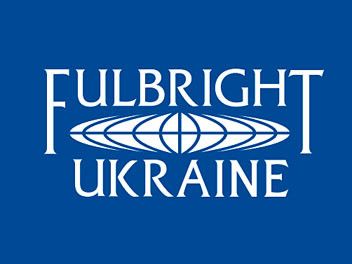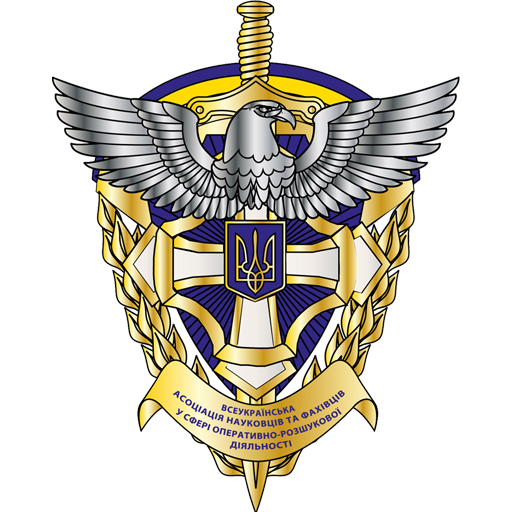
HOW TO PUBLISH IN INTERNATIONAL PEER-REVIEWED PUBLICATIONS
It was on this topic that on April 4, 2016, the Ministry of Education and Science of Ukraine organized a training for scientific and pedagogical, research workers and postgraduate students, which was held at the Odessa National University named after I.I. Mechnikov. The training was conducted with the support of the Fulbright Program Office in Ukraine.
Members of the Association of Scientists and Specialists in the Field of Operational and Investigative Activities took an active part in the training.
At the beginning of the event, a representative of the Fulbright-Clinton Program, Alexis Ramos, made a welcoming speech, emphasizing the usefulness of this event for the professional development of each scientist. The latter emphasized the presence of representatives of the Ministry of Education and Science of Ukraine and the Department of Certification of Highly Qualified Personnel at the training.

A report on the topic "How and why is it necessary to publish in international publications?" was delivered by Fulbright Leadership and Empowerment Scholar Michelle Vasquez, who noted that in order for a scientific article to be published in a foreign journal, it must be original, innovative, based on sufficient research, and contain quality references to the literature. It is also very important to learn how to identify a quality foreign journal.

Separately, criticism of a scientific article was noted, which should be perceived as a normal phenomenon. “After all, people who criticize “care” about you. They point out your mistakes, by removing which you improve. Look for people who will criticize your scientific works,” the speaker emphasized. No less interesting was the report of the US Department employee Thaddeus McClearly “Academic Writing”.
First of all, he noted that plagiarism should be understood as any phrase, sentence that the author borrowed without referring to an official source. There are three types of plagiarism: 1) text rewritten word for word; 2) text rewritten partially, using your own words elsewhere; 3) text expressed in your own words, but the idea (concept) remains borrowed. Also, the speaker added that plagiarism includes the transfer of someone else’s idea, even if a few words are replaced or rearranged. The 10 reasons given in the report for not accepting a scientific article for an international peer-reviewed publication are worth noting:
1) the title of the article does not correspond to the content;
2) the purpose of the research remains unclear or is at odds with the research methods;
3) the research methods do not match the results obtained;
4) the presence of grammatical or lexical errors in the scientific article;
5) the text of the article is not presented in a scientific style;
6) there is a deviation from the subject of the research;
7) the data provided is outdated;
8) there is plagiarism;
9) the structure of the article is broken;
10) local research results do not have a logical connection with the final conclusions.
At the end of the report, Thaddeus McCleary defined an algorithm of actions before writing a scientific article, which consists of answers to the questions: “What do I know about this topic?”, “Why is this topic so important?”, “How to do it?”, “What research has already been conducted on this topic?”, “What results were obtained during the research on this topic?”. Regarding the equally important issue of translating a scientific article into a foreign language, the speaker noted the website https://lang-8.com/, with the help of which the author has the opportunity to write an article in a foreign language at any level of proficiency, send it to the specified site, where native speakers of the foreign language will correct errors for free and send the article back.
During the report “Roadmap to Publication and Maximizing Your Chances of Publication,” Fulbright graduate student Nathan Pickett pointed out some websites that will be useful for every scientist, namely https://www.h-net.org, http://www.lsoft.com/catalist.html (for searching for foreign journals), http://gen.lib.rus.ec (for searching for books), https://sci-hub.io (for searching for scientific articles), www.scimagojr.com/journalrank.php (for searching for a journal by field), http://www.journalmetrics.com (for searching for special journals), etc.
At the same time, the speaker focused in detail on the direct selection of an international peer-reviewed journal. Thus, Nathan Pickett provided the following advice on this matter:
1) get acquainted with a number of articles of the chosen journal over the past few years;
2) talk to colleagues, maybe some of them have already been published there;
3) review the journal articles and their citation index;
4) choose the style of writing the article, decide on the title;
5) determine the keywords and abstract for the article;
6) find out the relevance of the chosen topic;
7) take into account that a very large or very small volume is bad;
8) determine whether the structure of the article is understandable;
9) determine whether the sentences in the article are understandable;
10) use the “correct” sources, because many foreign editors, if they find plagiarism in the article, make a corresponding mark in the database. This also applies to the deadlines for submitting the article, so it is worth adhering to them. Also, the speaker added that it is not recommended to send the same article to the same foreign journal.
Tetyana Yaroshenko, President of the Ukrainian Alumni Association of the Fulbright Scholars Association, gave a presentation on "Scientific Communication," which she proposed to understand as "registration" of a new idea or research, "certification" of research quality, informing about research and its results (through publication in a scientific journal), and "archiving" research results for future access and use.
The speaker noted that today science is turning into a competition in terms of the number of publications, citations, and the growth of bibliometric indicators (Hirsch index, etc.). However, the questions “What areas of research are relevant?”, “Are we going to reinvent the wheel?”, “Who finances such research?”, “How to find fellow scientists?”, “What are the scientific journals in this field?”, “Which of these journals are the most influential?”, etc. remain open. The speaker called for finding answers to these and other questions using the most authoritative databases of scientific literature, which are equipped with tools for tracking and analyzing the citation rate of scientific works — Web of Science and Scopus. It is with the help of these scientometric databases that it is possible to identify leading journals, conferences in a specific narrow field, the strengths of the university, promising young scientists, and areas for establishing productive cooperation.
Today, as noted by Tetyana Yaroshenko, each scientist should also take care of his/her ID – a unique identifier of authors-scientists, which solves the problem of correct recognition of documents of a specific author. You can get an ID by registering on the website http://orcid.org. The speaker advised universities to develop their own scientific journals, which are indexed by the WoS and Scopus databases.
Continuing the topic “Scientific Communication”, Iryna Tikhonkova, Senior Researcher at the Institute of Molecular Biology and Genetics of the NAS of Ukraine, noted that publication in publications indexed by the WoS and Scopus databases gives the scientist a reputation, an increase in the readership, search for partners, grants, monetized bonuses from management. At the same time, the speaker emphasized that each scientist should have one profile in Scopus, a ResearcherID profile, a GoogleScholar profile, a researchgate.net profile, and an ORCID profile.
During her report, Iryna Tikhonkova also focused on the requirements for scientific journals. Thus, in her opinion, “quality” scientific journals cannot require two reviews for a scientific article, so reviews should be replaced with responses. Secondly, the editorial board of the journal should include at least one foreign scientist. Thirdly, a scientific journal will be indexed only when each article is posted separately on its website in pdf format.
At the end of the training, a general discussion took place among the participants of the event.
